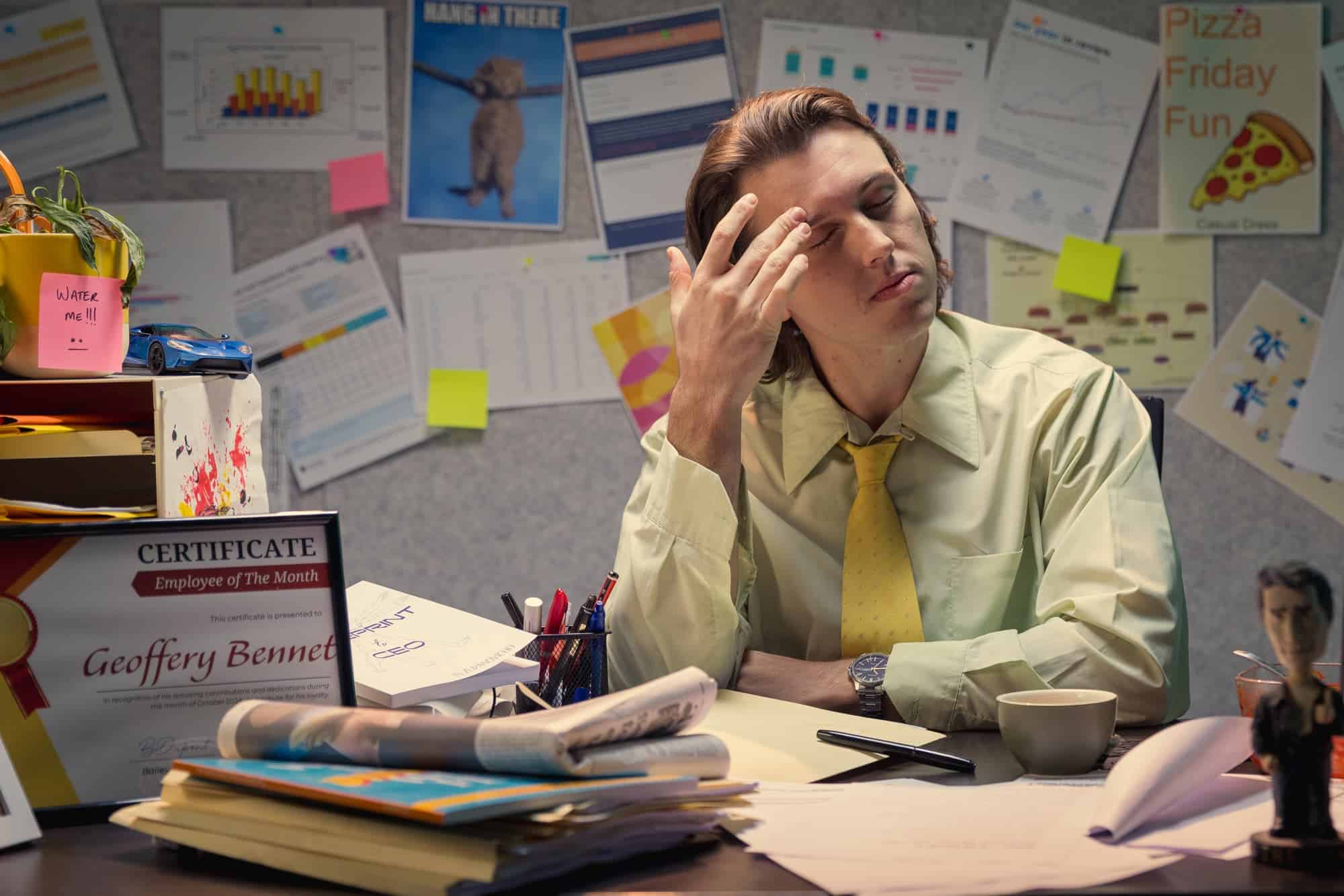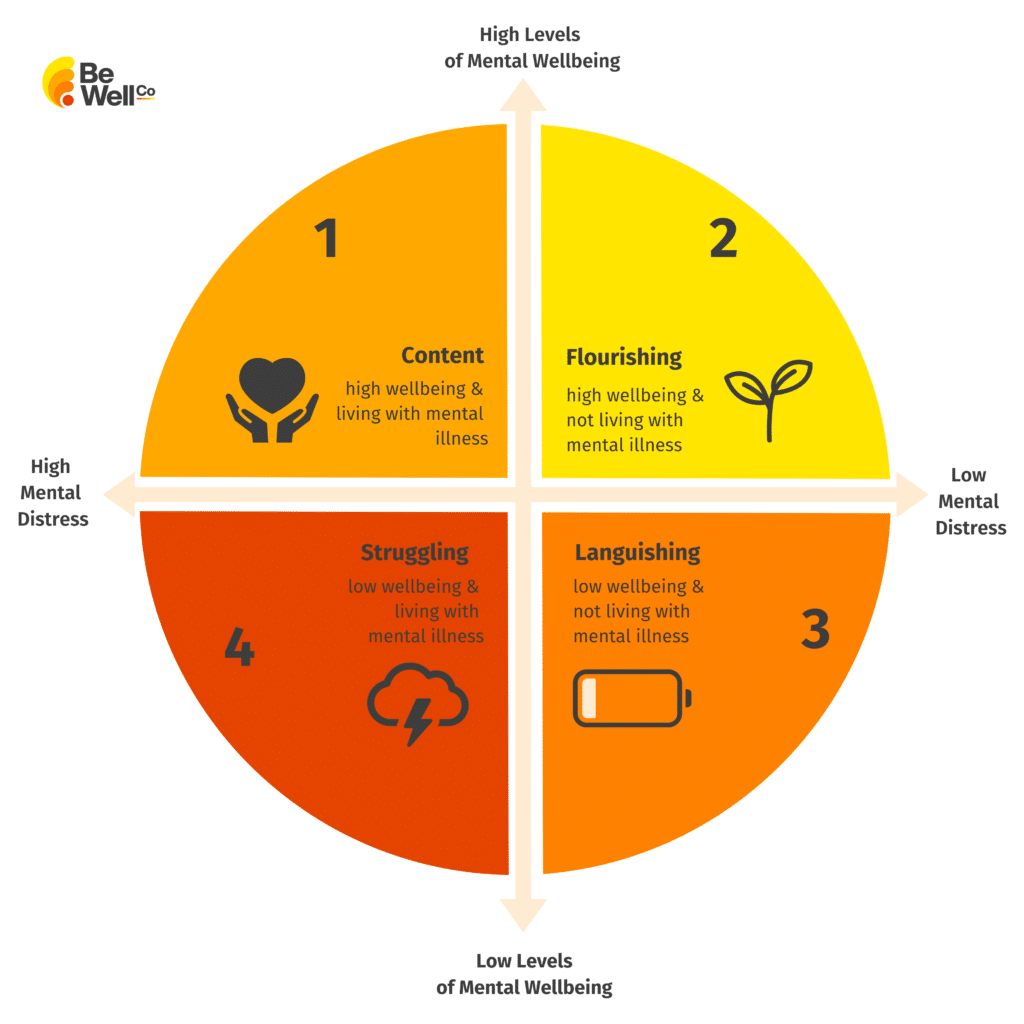Rethinking mental health beyond binary
Have you ever noticed how something can be two things at once? Water can be both liquid and a solid. Cars can be hybrid and electric. Music can blend major and minor keys in the same song. A bilingual person can think, speak, and dream in two languages at the same time—effortlessly switching between them.
Traditionally, we’ve approached mental health as a linear spectrum: you’re either mentally healthy, somewhere in the middle, or mentally unwell, like this:

But this black-and-white view oversimplifies our human experience. It doesn’t quite capture the richness and complexity of what it’s like to be a person.
Why we need to think of mental health beyond a spectrum
The old way we thought about mental health and illness is falling short because:
- It only focuses on distress. No one wants to talk prevention or promotion of wellbeing because it is overshadowed by risk mitigation and addressing distress. Imagine if we balanced these efforts to cultivate positive mental health in individuals including those who do not fit into diagnostic categories.
- It reinforces stigma. Binary thinking suggests that people with mental illness cannot achieve wellbeing and thrive, which just isn’t true.
- It misses complexity of human experiences. Traditional programs might not cater to individuals who are thriving in some areas while struggling in others, leading to incomplete care.
- It overlooks Positive Psychology. By focusing on what’s wrong, we miss out on enhancing what’s right, such as personal growth, resilience, and social wellbeing.
Another way – understanding the dual continuum model
Originally proposed by researchers like Corey Keyes, the Dual Continuum Model suggests that mental health and mental illness aren’t just opposites but are in fact separate (but related) dimensions that can exist at the same time.
- Mental Health Continuum: This ranges from languishing (low levels of wellbeing) to flourishing (high levels of wellbeing). It encompasses emotional, psychological, and social wellbeing, reflecting how engaged, fulfilled, and connected an individual feels.
- Mental Illness Continuum: This ranges from the absence of mental illness to the presence of conditions like depression, anxiety, or more complex psychiatric disorders.
At first, this might sound contradictory—but in reality, it mirrors the depth of human experience. You can feel a deep sense of purpose while managing anxiety. Or feel flat and disconnected even though there’s no diagnosable mental illness in sight.
Let’s break this down with some examples.
Content
Living with a mental illness and experiencing high levels of wellbeing.
- Example: An artist with schizophrenia who, during stable periods, creates powerful, fulfilling work and maintains meaningful relationships. Or someone with anxiety who feels deeply connected to loved ones, has a sense of purpose, and sets exciting goals.
- These people might need ongoing support—or they may feel capable without it.
Struggling
Living with a mental illness and low levels of wellbeing.
- Example: A person with an eating disorder who feels isolated, hopeless, and lacks supportive connections.
- Support from mental health professionals like psychologists, counsellors, or psychiatrists can be important here.
Flourishing
No mental illness and high levels of wellbeing.
- Example: A nurse who feels purposeful in their career, enjoys fulfilling relationships, and makes time for rest and joy.
- They may not need support, but can benefit from practising strategies to sustain progress and stay well.
Languishing
No mental illness but low wellbeing.
- Example: A successful executive who appears “fine” but feels empty and disconnected from meaning and lacks close relationships.
- They might not need clinical treatment—but they do need support to rediscover joy, connection, or direction.
Towards a 360-degree approach
To align with the Dual Continuum Model, our mental health system needs to move beyond reactionary systems and into proactive, whole-person approaches.
Balancing promotion and prevention: We must shift from not just treating illness, but towards actively promoting wellbeing across the board.
Education and Awareness: We need to educate our leaders on the dual nature of mental health, and that you can have high wellbeing with a mental illness, and low wellbeing without one. normalise the idea that someone can be doing well and need support, or feeling stuck without a diagnosis.
Mental health isn’t either/or. It’s both/and
The Dual Continuum Model challenges us to expand how we think about mental health—in workplaces, in communities, and in our own lives. It’s not about slapping on a label or drawing a line between “well” and “unwell.” It’s about acknowledging the full spectrum of human experience.
By moving from a binary model to a 360-degree view, we not only improve treatment—we enrich lives. This overhaul is not just about improving treatment for mental illness but about enriching the quality of life for all individuals, fostering environments where everyone can flourish.
Authors: Amy Smith – Chief Transformation Officer at Be Well Co & Esme Fabry – Knowledge and Translational Specialist at Be Well Co, Registered Psychologist
Want to Read More?
 Languishing, Workplace
Languishing, Workplace
The effects of emotional apathy caused by languishing in the workplace
“The opposite of connection is not disconnection; it is isolation.” – Harriet Lerner Imagine feeling indifferent or unmotivated day to day. Everything feels “meh” and takes effort. You lack interest, your emotions are dulled,… 10 Jul 2025 3 min read Languishing
Languishing
Languishing vs burnout
What’s the difference? We’ve all heard of burnout. It’s the feeling of being overwhelmed, exhausted, and emotionally drained, especially at work. Since the pandemic, another term has been talked about more, and it’s the… 01 Jul 2025 4min read Languishing
Languishing



